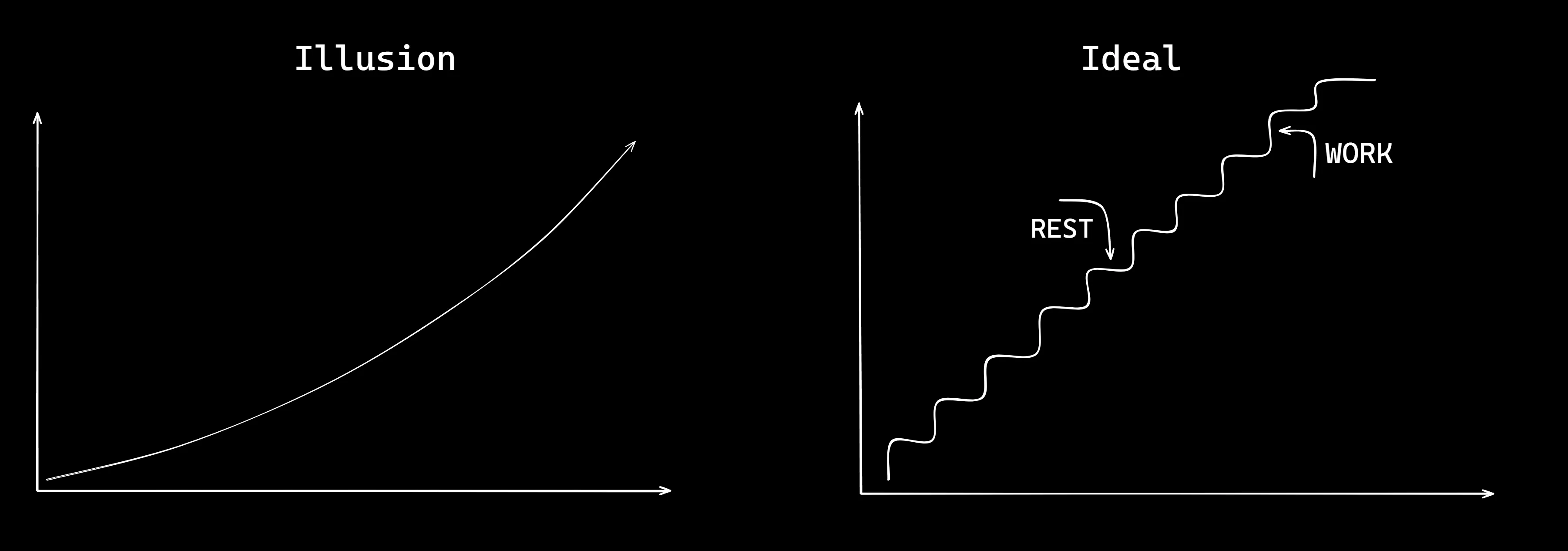Published on 2024-01-17 08:00 by Gabriel Palhares
Your Tech Career Should be Like a Motorsport
a parallel between your learning process and Formula One

Intro
Last weekend, while watching videos of race highlights from the 2021 Abu Dhabi Grand Prix (Max Verstappen fan here), I felt myself motivated by my ongoing habit of writing articles. This made me reflect on the similarities between motorsport and my learning journey in computer science. I asked myself, ‘Why not write about this?’ So, I began drawing this parallel.
While trying to do that, I realized that embarking on a computer science career can be easily linked to many motorsport characteristics. Both paths are filled with twists, turns, and the occasional need for improvements. In this article, we’ll explore how certain principles of motorsport can be applied to optimize your learning process and career development.
Pit Stops and Maintenance
Just as racers strategically make pit stops to keep their cars in peak condition, learners should recognize the importance of breaks in the learning process. Many people say that a computer science career can be overwhelming and lead to burnout. These pauses allow you to absorb content better, rest, reflect on your progress, and adjust your study strategies. Think of these breaks as opportunities to fine-tune your learning engine, aiming for your best performance.
Adaptability and Course Correction
In both motorsport and tech careers, unexpected challenges arise. The ability to adapt and course-correct is key. Just as a racer adjusts to changes on the track and problems with their cars, software developers must be ready to pivot their strategies when facing difficulties.
In my previous article, I discussed one of these challenges, explaining a bit about Rabbit Holes. However, there’s a lot more that people often forget when coding: code errors you’ve never solved before, deployment crashes, messy codebases, coworker misconduct, strange abstractions… this list can be endless.
Keep this in mind: Your career and learning process are not a straight, ascending line; they involve many ups and downs. Embrace challenges as opportunities to refine your skills, taking the best from your ‘ups’ and enjoying them while staying grounded and resting during your ‘downs’. Everyone makes mistakes and goes through difficult phases, so don’t blame yourself too much when you’re feeling incapable. This mindset will improve your overall performance on your career journey.

Teamwork and Collaboration
Motorsport teams exemplify the strength of collaboration, and the same holds true in the world of computer science. Have you ever heard about Learn In Public? The logic behind Learn In Public relies into the open-source culture, and its motto is to learn faster than privately learning. Although Swyx - Shawn Wang - is not the founder of the idea, he’s one of the most popular advocates of it. He describes Learn In Public as follows:
‘You share what you learn, as you learn it. You open-source your knowledge. You build a public record of your interests and progress, and along the way, you attract a community of mentors, peers, and supporters. They will help you learn faster than you ever could on your own. Your network could be vast, consisting of experts in every field, unconstrained by your org chart.’ - The Coding Career Handbook.
Seek guidance, learn from peers, and foster a sense of community within your learning process. Collaborative efforts can lead to accelerated progress and the discovery of great solutions to complex problems. It’s your journey, but with the knowledge shared in community, you can drive further.
Setting Goals and Milestones
Just as racers aim for specific lap times and podium finishes, set realistic goals and milestones in your journey. Nobody wins a grand prix without training, studying the track, and planning how to achieve the fastest lap first. This is strategy. Achieving smaller milestones contributes to overall progress and keeps you motivated. Instead of aiming for one big, specific goal, break it down into smaller objectives. Map out your learning route, and celebrate each milestone as a step closer to mastering your stack or achieving your dream job.
Endurance and Long-Term Commitment
View your learning journey and tech career as a marathon rather than a sprint. The winner of the race isn’t determined by the car that reaches maximum speed, but rather by the one that completes the lap most efficiently and consistently. It’s about being fast when necessary, executing proper gear shifts, slowing down when required, and changing tires at the right moment. All of these aspects are associated with endurance and long-term commitment. Understand that setbacks are part of the journey, and staying committed to your goals is essential. Day by day, you’ll get there.
Finish Line
These are the principles that explain why your tech career should be like motorsport: strategic pit stops, adaptability, teamwork, mastering skills, setting ambitious goals, and building endurance. As you rev your engines by incorporating these ideas, I believe you’ll navigate the twists and turns of your tech career like a pro. Consistent effort, coupled with a long-term perspective, will ensure that you cross the finish line.
I have no idols. I admire work, dedication and competence. - Senna
Cover photo by Maria Geller, taken with an ILCE-7M3.
Written by Gabriel Palhares
← Back